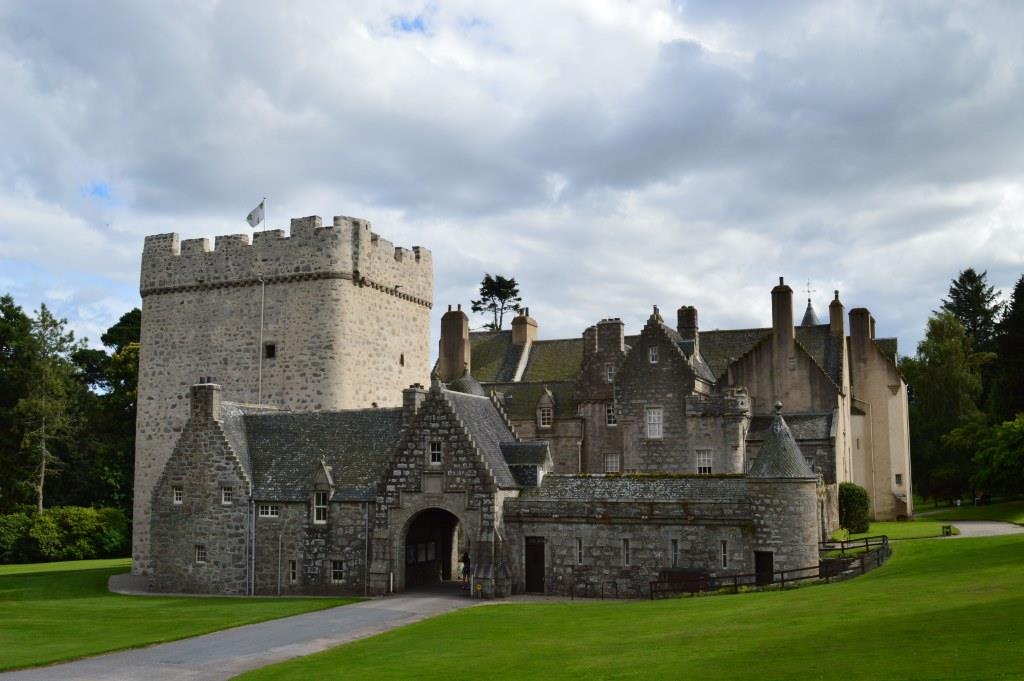Drum Castle

Drum Castle Details
Drum Castle, a C14 tower and courtyard of the Irvines extended C16-18. National Trust for Scotland.
- Closest To: Banchory, Aberdeen
- Access: Chargeable Public Access
- Grid Reference: NJ796004
Drum Castle is one of the most intriguing castles in Deeside. The home of the Irvine family for centuries, the development of the castle in Scotland is here for all to see. The oldest part is the square tower, although even this feature was built in two separate phases, once in the early 13th century and once in the late 13th/early 14th century. The entrance is at 1st floor level, and access to the other levels of the castle are via a mural stair.
The basement contains the well, and a trapdoor through which supplies could be transferred to the great hall above. Above this and at entrance level is the vaulted double height Common Hall, now converted to a library and only accessible from the main house. Above this is a second double-height hall, again vaulted in stone, but the vault is at right angles to the Common Hall beneath. Corbels half-way up the walls to support timber floors show that both spaces were once divided into two levels, that in the upper hall represented by a timber platform with a very steep stair, which provides access to the roof.
This tower was not originally built by the Irvine family, because they were first granted Drum by Robert the Bruce. William de Irwyn was probably appointed Forester of the Royal Forest of Drum, and in 1323 was given the keeping of the Tower as well as the Barony of Drum. It is highly likely that the tower required repairing after the Wars of Independence, this would certainly have been Irvine work. The tower would also have had a defended courtyard of sorts, probably occupying the site of the courtyard today, but it was not until 1619 that a substantial house was built along the south side of this area.
During the Civil War, General Monroe besieged and captured Drum, and garrisoned it against Royalist forces, (the first of four times it would be during this period) and only a short while later the Marquis of Argyll besieged and captured it again, ejecting Lady Irvine and her mother in-law from their home. The castle and lands were ransacked, leaving the laird all but destitute. The first line of the Irvines of Drum, burdened with debt, died out, and the castle and what was left of the estate (after various parts were sold off) passed through a number of different sets of Irvines before an agreement was made with the National Trust for Scotland to inherit maintain and manage Drum Castle for the benefit of the nation. The Trust still own Drum, and it is open to the public.
Official National Trust for Scotland page
Become a supporter of my work to access a more detailed history